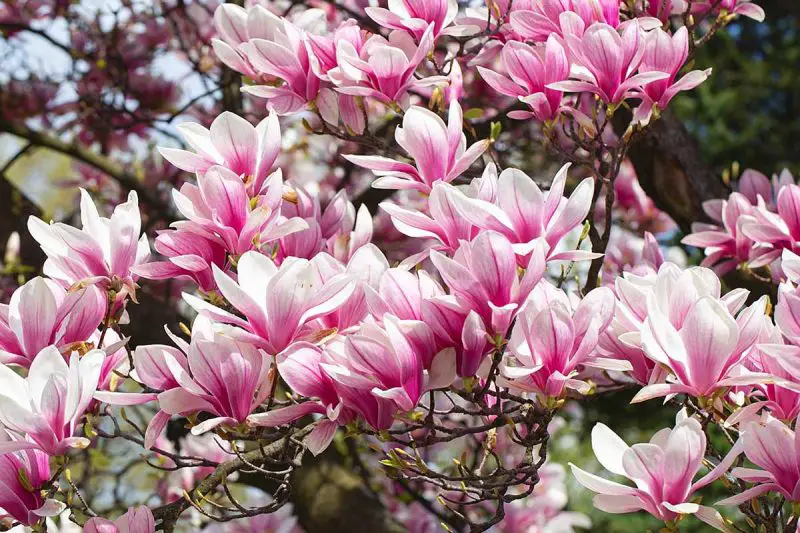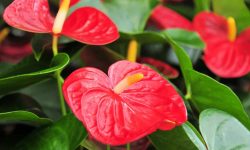There’s something magical about the moment a magnolia tree bursts into bloom. Whether it’s the soft blush of a star magnolia in early spring or the grand, fragrant white blossoms of a Southern magnolia in summer, these flowers stir the senses and capture the heart. Their arrival often signals the changing of the seasons—bringing with them not just color and fragrance, but a sense of renewal and wonder.
But when exactly do magnolias bloom, and how can you ensure your tree produces more of these breathtaking flowers year after year? In this guide, you’ll uncover the seasonal rhythms of different magnolia varieties, learn what environmental factors influence their blooming, and gain expert strategies to help your magnolia flourish with maximum blooms—no matter where you live.
Understanding Magnolia Bloom Times

Magnolia bloom times are not one-size-fits-all. They vary widely depending on the species, climate, and growing conditions. Understanding these differences is the first step toward anticipating and enhancing your magnolia’s flowering season.
The Role of Magnolia Varieties
Each magnolia species has its own natural rhythm. Deciduous magnolias—those that lose their leaves in winter—tend to bloom earlier in the year, often before leaf-out. Examples include the star magnolia (Magnolia stellata) and saucer magnolia (Magnolia x soulangeana), which may start blooming as early as late February in warm climates. These early bloomers create a stunning silhouette of bare branches crowned with delicate flowers.
Evergreen varieties, like Magnolia grandiflora, maintain their foliage year-round and bloom later, typically in late spring to early summer. Their flowers are larger and more fragrant, and their blooming season often lasts longer, sometimes continuing intermittently through summer and even into early fall, especially in the South.
Hybrid magnolias, which combine traits of different species, may bloom at intermediate times and often offer extended or repeat flowering. Cultivars such as ‘Jane’, ‘Ann’, and ‘Betty’ are known for late-spring bloom and greater cold tolerance.
Climate and USDA Zones
Magnolia trees are adaptable but bloom timing is highly dependent on your USDA hardiness zone. In warmer southern zones (8–10), magnolias often bloom earlier and longer due to milder winters and earlier springs. In cooler northern zones (4–6), bloom onset is delayed until later in spring to avoid frost damage.
In coastal or temperate areas, magnolias may even flower twice a year if the weather remains favorable. However, in climates with unpredictable spring frosts, early-blooming varieties can suffer bud loss, which is why zone-appropriate selection is so important for reliable blooming.
Age and Maturity of the Tree
Magnolias don’t rush their beauty. Young trees—especially those grown from seed—can take several years, sometimes up to a decade, before flowering. Grafted or nursery-grown specimens tend to bloom sooner, often within 2 to 3 years after planting. During the juvenile phase, the tree focuses on root development and structural growth, so flowering may be sparse or inconsistent.
Once mature, magnolias often establish a predictable blooming pattern each year. Flower quantity tends to increase with age, especially when the tree receives consistent care and is free from stress. Understanding this timeline helps gardeners avoid disappointment and instead plan for long-term beauty.
Key Blooming Periods by Magnolia Type
Early Spring Bloomers
Early spring magnolias are among the first trees to bloom, often flowering while winter still lingers. Their early arrival brings beauty and hope to the garden before most plants wake up.
Magnolia stellata (star magnolia) and Magnolia × soulangeana (saucer magnolia) are the most common early bloomers. Star magnolias are compact and produce fragrant, star-shaped white or pink flowers in late February to March in warm areas, or March to April in cooler zones. Saucer magnolias offer larger, tulip-shaped blooms in shades of white, pink, and purple—often opening just before leaves appear.
These trees can be sensitive to late frosts, so planting them in sheltered spots and using mulch helps protect their buds. With proper care, early bloomers reward gardeners with a spectacular display that marks the start of spring.
Mid-to-Late Spring Bloomers
Mid-to-late spring magnolias bloom slightly later than early varieties, offering a second wave of color as the season warms. These include species like Magnolia liliiflora and hybrids such as ‘Ann’, ‘Jane’, and ‘Betty’, which are prized for their deep purple, reddish-pink, or violet flowers.
These trees typically bloom from April to early May, depending on the climate. Their later flowering helps them avoid damage from unexpected frosts, making them a reliable choice in regions with unpredictable spring weather.
Compact and hardy, many of these varieties are ideal for smaller gardens or urban spaces. Their blooms often appear alongside or just after leaf-out, creating a lush and colorful look. With minimal care, mid-to-late spring magnolias provide strong, consistent flowering year after year.
Summer Blooming Magnolias
Environmental Factors Affecting Bloom Time
Sunlight and Exposure
Magnolias thrive best in full sun, ideally receiving at least 6 hours of direct sunlight each day. Adequate light encourages stronger growth, more flower buds, and better bloom quality.
While some varieties can tolerate partial shade, too little sunlight may result in fewer or smaller blooms. For early-blooming types, a sunny, sheltered location also helps protect flower buds from frost and wind damage. Choosing the right spot from the start is key to long-term flowering success.
Soil Conditions
Healthy soil is essential for magnolia blooming. These trees prefer slightly acidic, well-drained soil rich in organic matter. Poor drainage can lead to root rot, weakening the tree and reducing flower production.
Heavy clay or compacted soils often cause water to pool around the roots, stressing the plant. Improving soil with compost or planting in raised beds helps maintain the right balance of moisture and air, supporting stronger root systems and more reliable blooms.
Winter Chill and Frost Events
Winter temperatures play a dual role in magnolia blooming. Many varieties need a certain amount of winter chill to trigger proper bud formation in spring. However, late frosts—especially after buds have begun to swell—can damage or kill flower buds, leading to little or no bloom that season.
Early-blooming magnolias are most at risk, as their buds emerge before the last frost. Planting in sheltered spots, avoiding low-lying frost pockets, and using frost covers during cold snaps can help protect blooms and ensure a successful flowering cycle.
Tips for Encouraging More Magnolia Flowers
Magnolia trees can reward you with spectacular blooms, but getting the most out of them requires consistent care and attention. These expert tips will help maximize flowering each season and keep your tree healthy for years to come.
Choose the Right Location
Where you plant your magnolia has a major impact on how well it blooms. Full sun is ideal—at least 6 hours of direct sunlight a day. Insufficient light can lead to fewer or smaller flowers, even if the tree looks healthy overall.
Avoid windy or exposed areas, which can dry out buds or cause damage before they open. Also steer clear of frost-prone low spots, as cold air can settle there and harm developing flower buds. Sheltered, sunny spaces give magnolias the best start.
Water Deeply and Consistently
Water plays a crucial role in supporting bloom development. Shallow, infrequent watering stresses the tree and may result in poor flowering. Instead, water deeply once or twice a week, especially during the dry months and early spring when buds are forming.
Keep the soil evenly moist—not soggy—to encourage strong root growth and reliable bloom production. Maintaining consistent moisture helps flowers last longer and appear more vibrant.
Use Balanced, Timed Fertilization
Fertilizing at the right time with the right formula encourages healthy growth and abundant flowers. Apply a balanced, slow-release fertilizer (such as 10-10-10) in early spring as the growing season begins.
Avoid high-nitrogen fertilizers, which encourage leaf growth at the expense of flowers. Organic options like compost or well-rotted manure can also enrich the soil gradually, improving bloom quality over time.
Prune Carefully and Sparingly
Magnolias need minimal pruning, but strategic trimming after flowering can benefit the tree. Remove dead, damaged, or crowded branches to improve airflow and light penetration, which supports bud development.
Never prune in late summer, fall, or winter, as this may cut off next year’s flower buds. Light, well-timed pruning helps maintain the tree’s shape without sacrificing blooms.
Protect from Late Frosts
Late frosts are a major threat to early-blooming magnolias. Even a single cold night can damage flower buds and wipe out the bloom for the season.
To prevent this, cover small or young trees with frost cloth or breathable fabric during cold snaps. Planting near walls or fences can also create a microclimate that offers some protection. A little prevention goes a long way in preserving your blooms.
Mulch to Retain Soil Moisture
Adding a 2–3 inch (5–8 cm) layer of organic mulch around the base of the tree helps conserve moisture, regulate soil temperature, and suppress weeds. This creates a more stable root environment and reduces stress on the plant.
Be sure to keep mulch a few inches away from the trunk to prevent rot. Healthy roots directly contribute to stronger, more consistent flowering.
Minimize Stress Factors
Stress from drought, pests, compacted soil, or root disturbance can reduce a magnolia’s flowering potential. When under stress, the tree may conserve energy by producing fewer or no flowers.
Reduce stress by providing adequate water, improving soil health, spacing the tree properly, and monitoring for signs of disease or insect damage. A healthy, well-maintained magnolia is much more likely to bloom reliably year after year.
Common Blooming Problems and Their Solutions
Even with proper care, magnolias may sometimes fail to bloom as expected. Understanding the most common issues—and how to fix them—can help you restore your tree’s flowering potential.
No Blooms on a Healthy-Looking Tree
If your magnolia appears healthy but doesn’t flower, the issue is often age or maturity. Many magnolia varieties, especially those grown from seed, take several years to bloom. In some cases, it can take 5–10 years before the tree produces its first flowers.
Another possibility is over-fertilization with nitrogen-rich products, which promote leafy growth instead of blooming. Switch to a balanced or bloom-boosting fertilizer and avoid applying fertilizer late in the growing season.
Bud Drop Before Flowering
Bud drop can occur due to environmental stress, such as drought, sudden temperature changes, or late frosts. These conditions weaken the tree and cause it to abort flower buds to conserve energy.
To prevent this, maintain consistent watering during dry periods and protect the tree during unexpected cold snaps, especially in early spring. Adding mulch helps regulate soil temperature and moisture, reducing the risk of bud loss.
Sparse Flowering on Mature Trees
If an established magnolia starts blooming less than usual, it may be facing competition for nutrients or light. Overcrowding from nearby plants or trees can reduce airflow and sun exposure, impacting flower production.
Carefully thin surrounding vegetation, prune lightly to open the canopy, and inspect the root zone for signs of compaction or damage. Aerating the soil and enriching it with compost can also help revive blooming in older trees.
Flowers Damaged by Weather
Wind, hail, or heavy spring rains can physically damage magnolia flowers, causing browning, wilting, or early petal drop. While you can’t control the weather, planting in a sheltered location or using temporary covers during storms can protect delicate blooms.
Pest or Disease Interference
Though magnolias are generally resilient, pests like scale insects and diseases such as leaf spot or powdery mildew can stress the plant and reduce flowering. Regular monitoring and early treatment with horticultural oils or appropriate fungicides can minimize damage and support bloom health.
Regional Blooming Guide Across the US
Magnolia bloom times and flower quality vary significantly across different U.S. regions due to climate differences such as temperature, frost risk, humidity, and seasonal patterns. Understanding how your local environment affects magnolia flowering can help you choose the right varieties and care practices for your area.
Southeastern United States
The Southeast—including states like Georgia, South Carolina, Alabama, Louisiana, and northern Florida—is one of the best regions for growing magnolias. The long, warm springs and mild winters allow many magnolia varieties to thrive.
Early bloomers like star magnolia and saucer magnolia can begin flowering as early as February, often continuing into March. Evergreen types such as Magnolia grandiflora bloom from May through summer, with some varieties flowering sporadically into fall.
However, occasional early warm spells followed by sudden frosts can damage flower buds. Choosing slightly later-blooming hybrids or planting in sheltered areas helps reduce this risk.
Northeastern and Midwestern United States
In cooler regions like New York, Pennsylvania, Michigan, and Illinois, magnolias bloom later—typically from late April to early May. Here, late frosts are a frequent challenge, especially for early-flowering varieties.
Deciduous magnolias like ‘Jane’ or ‘Ann’—which bloom a bit later than star magnolia—are better suited to these areas, as they avoid the frost window. Planting near buildings or walls helps create warmer microclimates that protect buds.
Winter chill is sufficient for bud development, but shorter growing seasons may limit the chance for repeat blooming in summer-blooming species.
Western and Coastal Regions
The West Coast, particularly coastal areas of California, Oregon, and Washington, offers a moderate climate ideal for many magnolia varieties. Mild winters with fewer frost events allow both early and summer bloomers to thrive.
In Southern California, magnolias may bloom as early as January or February. The dry summer climate requires regular watering, especially for large-flowered varieties like Magnolia grandiflora, to maintain healthy blooms.
In the Pacific Northwest, moisture-loving magnolias do well, but cloudier skies may slightly delay blooming compared to sunnier inland areas.
Southern and Central Plains
States like Texas, Oklahoma, and Kansas have variable spring weather with a mix of warm spells and late cold fronts. Early bloomers are often at risk of frost damage, so later-flowering varieties or heat-tolerant hybrids are more dependable.
Hot summers and occasional droughts can stress trees, reducing bloom quality and duration. Deep watering, mulching, and selecting drought-tolerant cultivars are essential in this region.
Rocky Mountain Region and Intermountain West
In states like Colorado, Utah, and parts of Idaho, the high elevation and short growing season pose challenges for magnolias. Late frosts and dry air can limit successful flowering.
Cold-hardy hybrids like ‘Butterflies’ or ‘Daybreak’ are better choices here. Proper siting, soil improvement, and winter protection techniques are crucial to achieving reliable blooms.
Choosing the Right Magnolia for Your Bloom Goals
Selecting the right magnolia variety is essential if you want to achieve specific blooming outcomes—whether it’s early color, extended flowering, fragrance, or suitability for a small space. Different species and cultivars offer different bloom times, flower forms, tree sizes, and care requirements. Understanding your bloom goals will help you make a smart, rewarding choice.
Fast-Blooming Species for Quick Results
If you’re eager to enjoy magnolia flowers soon after planting, choose varieties known for blooming at a young age. Grafted trees or named cultivars from reputable nurseries typically flower within 2 to 3 years.
Star magnolia (Magnolia stellata) and saucer magnolia (Magnolia × soulangeana) are among the earliest and most reliable bloomers. Their flowers often emerge in late winter to early spring, long before many other plants show signs of life. They’re ideal for gardeners looking to add early-season interest to the landscape.
Hybrids like ‘Jane’ and ‘Ann’—part of the “Little Girl” series—also bloom fairly early and are more frost-resistant than older types, making them well-suited to cooler climates.
Long-Lasting Bloomers for Seasonal Color
If your goal is to enjoy magnolia flowers for an extended period, opt for varieties that bloom later in the spring or sporadically through the summer.
Magnolia grandiflora, the iconic Southern magnolia, produces large, creamy-white blooms starting in late spring and often continues flowering intermittently throughout the summer. Cultivars like ‘Bracken’s Brown Beauty’ or ‘D.D. Blanchard’ are especially long-lasting and more cold-tolerant than the species.
Some deciduous hybrids, such as ‘Elizabeth’ or ‘Butterflies’, also offer longer bloom windows combined with unique yellow hues, adding novelty and color diversity to the garden.
Compact Magnolias for Small Gardens
For smaller yards, patios, or urban spaces, compact magnolia varieties provide all the beauty without overwhelming your landscape. These selections are also great for container growing, provided they receive proper care.
Varieties like ‘Little Gem’, ‘Teddy Bear’, and ‘Kay Parris’ offer the classic evergreen magnolia look with more manageable heights—typically maturing at around 10 to 20 feet. Deciduous dwarf hybrids like ‘Susan’ or ‘Betty’ offer vibrant purple or pink blooms on smaller, bushier forms.
Choosing a compact cultivar allows you to enjoy magnolia beauty in tight spaces without frequent pruning or root crowding.
Fragrant Bloomers for Sensory Appeal
If fragrance is a top priority, focus on varieties like Magnolia grandiflora or Magnolia virginiana, both known for their rich, citrusy scent. Star magnolias also offer a sweet, light fragrance that perfumes the early spring air.
Planting these trees near windows, patios, or walkways ensures you get the most enjoyment from their scent during peak bloom.
Cold-Hardy Magnolias for Challenging Climates
Gardeners in Zones 4–6 should seek out cold-hardy hybrids that can withstand harsh winters without losing bloom buds. Varieties like ‘Leonard Messel’, ‘Merrill’, and ‘Daybreak’ are known for both hardiness and prolific flowering.
These selections bloom slightly later to avoid frost damage and thrive in a range of soil types, making them ideal for northern gardeners who want reliable spring color.
Long-Term Magnolia Bloom Management
Sustaining vibrant, abundant magnolia blooms year after year requires consistent long-term care. While magnolias are relatively low-maintenance once established, their flowering performance depends on proper support over the years.
Pruning with Purpose
Unlike many flowering trees, magnolias should be pruned sparingly. Over-pruning or cutting at the wrong time (especially in late winter or early spring) can remove flower buds and disrupt the bloom cycle. The best time to prune is just after flowering—this avoids cutting off next season’s buds and allows the tree to recover before dormancy.
Remove only dead, diseased, or crossing branches. Light shaping is acceptable, but aggressive pruning can reduce blooms for several years.
Feeding for Flower Power
Over time, soil nutrients may become depleted, especially in older landscapes or sandy soils. Apply a slow-release, balanced fertilizer in early spring before buds break, or use a bloom-boosting formula low in nitrogen but rich in phosphorus and potassium. Avoid high-nitrogen products that promote leaf growth at the expense of flowers.
Mulching annually with compost or well-rotted organic material helps improve soil structure and supports long-term nutrient availability.
Monitoring Tree Health
Pests, diseases, and environmental stress all influence flowering. Keep an eye out for scale insects, leaf spot, or mildew—issues that often begin subtly but can gradually weaken the tree.
Healthy magnolias bloom more consistently. Support their immune system with proper watering during droughts, mulch to regulate soil temperature, and ensure good airflow through light thinning if the canopy becomes too dense.
Adapting to Maturity
As magnolias age, their growth and blooming habits may shift. Some mature trees may bloom slightly later or less profusely than in their early decades. This is a natural part of the tree’s cycle. However, with careful care—including soil enrichment and occasional rejuvenation pruning—you can help sustain healthy flowering well into the tree’s lifespan.
FAQ About Magnolia Blooming
When do magnolias typically bloom?
Magnolias bloom at different times depending on the species and climate zone. Early types like star and saucer magnolias bloom in late winter to early spring, while Southern magnolias and some hybrids bloom from late spring into summer. In colder regions, flowering often begins in April or May.
Why didn’t my magnolia bloom this year?
Several factors can affect blooming. Common reasons include late frost damage, too little sunlight, pruning at the wrong time, or general plant stress such as drought or transplant shock. Young magnolias may also take a few years to mature before they flower.
How can I encourage more magnolia blooms?
To increase flowering, provide full sun, water regularly in dry spells, avoid over-fertilizing with nitrogen, and prune lightly only after blooming. Healthy, well-drained soil and minimal root disturbance also support better bloom performance.
Do magnolias bloom more than once a year?
Most magnolia trees bloom once per year in spring. However, some varieties like Magnolia grandiflora can bloom intermittently through summer and even into early fall in warmer climates.
Which magnolia is best for early blooming?
For early-season flowers, choose star magnolia (Magnolia stellata) or saucer magnolia (Magnolia × soulangeana). These varieties bloom in late winter or very early spring and are ideal for adding early color to the garden.
Conclusion: Get More From Every Magnolia Bloom
Knowing when magnolias bloom and how to support them throughout the year transforms your garden from beautiful to breathtaking. By understanding variety-specific bloom times, caring for environmental needs, and practicing consistent maintenance, you can enjoy more blossoms, for longer periods, season after season. Whether you’re planting your first magnolia or nurturing a decades-old tree, each bloom is a reward for thoughtful gardening.






